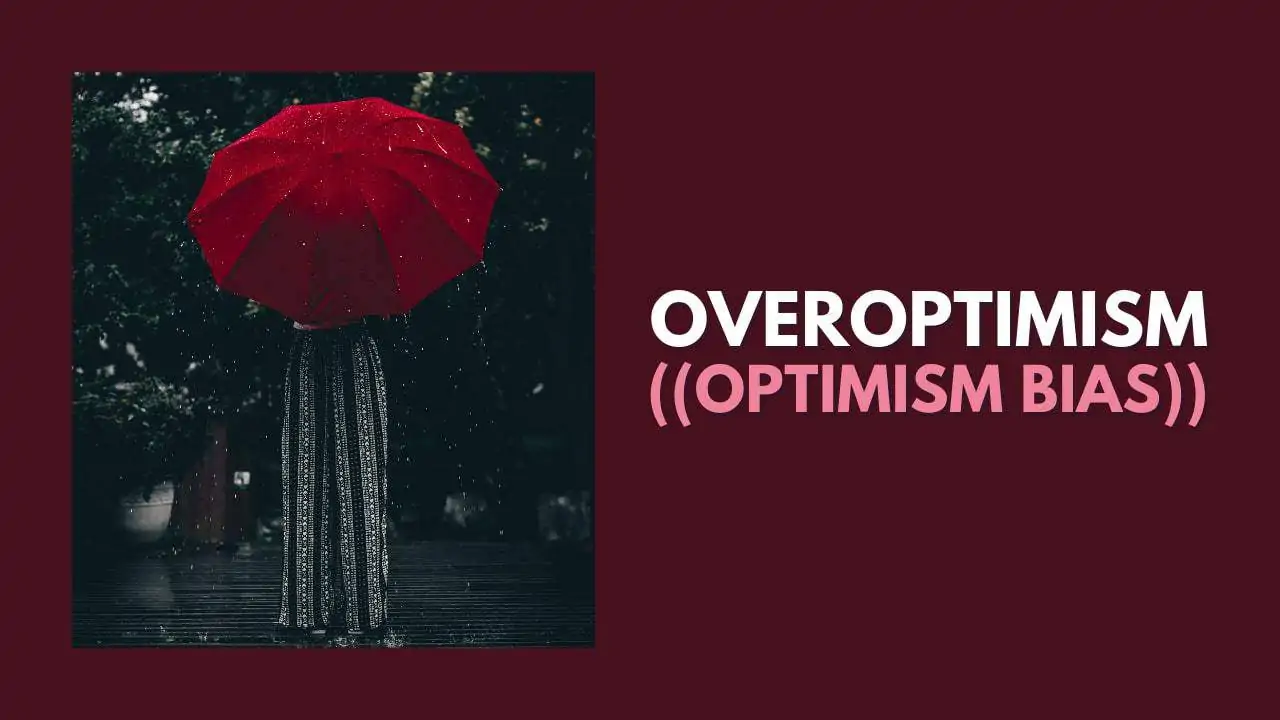Today's Thursday • 4 mins read
Optimism means seeing the good side of life. And it has its advantages.
Optimistic people look for solutions and opportunities when things go wrong. They don’t give up; instead, they judge the situation wisely and take smart risks. And often get the reward of more success, less stress, better relationships, and healthier lives.
Yet, optimism has a dark side: Overoptimism. Also called overoptimism bias, optimism bias, or positive outcome bias.
Overoptimism is when optimism loses touch with reality, becoming a mix of blind faith and “toxic positivity.” It pushes you to sidestep the warning signs, make the quickest choices, and feel crushed when things don’t go as planned.
So, when does being optimistic go too far? Where do you fall on this spectrum?
Take the test.
How Optimistic Are You? A Quick Check!
Curious about your outlook on life? Take this quick, informal quiz to get a sense of your typical level of optimism. This is for fun and self-reflection, not a professional assessment!
Your Optimism Score: /50
Interpretation: This score gives you a general idea of your current level of optimism. Remember, optimism can fluctuate and be developed!
- Score 10-25: You might tend to have a more realistic or cautious outlook. Reflect on if there are areas where a more positive perspective could be helpful.
- Score 26-40: You show a healthy level of optimism, balancing positive expectations with an awareness of challenges. You likely approach life with a hopeful and proactive mindset.
- Score 41-50: You exhibit strong optimistic tendencies! You likely have a consistently positive outlook, expect good outcomes, and are resilient in the face of adversity.
This quiz is for self-reflection and personal interest only, and is **not a substitute for professional psychological assessment or advice.** If you have concerns about your mood, outlook, or overall mental well-being, or if you’re experiencing persistent negative feelings, we strongly recommend consulting with a qualified mental health professional (like a therapist or counselor). They can provide a comprehensive evaluation and support tailored to your individual needs.
- Overoptimism is an excessive or unrealistic level of optimism. It is a form of cognitive bias. It is rooted in our inherent desire to view ourselves and our future in a positive light.
- Overoptimistic people overestimate the likelihood of positive outcomes and underestimate the likelihood of negative outcomes.
- It can lead to unrealistic expectations, minimizing risks, ignoring potential failures, and making decisions based on an overly positive view of the future.

Optimism and happiness are distant cousins:
- Optimism is a positive (“optimistic”) view of the future, grounded in a realistic evaluation of today.
- Happiness is mainly a positive state of mind grounded in the present, whether real or imagined.
The Science Behind Optimism's Double Edge
- Mental Health Benefits Are Real: Optimistic people are less likely to die of heart diseases or other causes (Rozanski & Bavishi, 2019). They report less depression, anxiety, and anger while maintaining higher energy levels and stronger self-esteem. Their social networks also tend to be more robust, built on trust and shared positive expectations.
- The Dark Side Emerges When Reality Gets Ignored: Overoptimism creates blind spots that can derail your life. When you dismiss legitimate concerns, skip necessary planning, or refuse to acknowledge real risks, optimistic thinking becomes self-sabotage. You might take on massive debt, ignore health symptoms, or stay in toxic relationships because you believe everything will “work out.”
- Your Brain's Optimism Bias Can Mislead You: Research shows most people naturally overestimate positive outcomes and underestimate negative ones. This built-in bias helped our ancestors take risks necessary for survival, but in modern life, it can lead to poor financial decisions, inadequate preparation, and missed warning signs.
- The Sweet Spot Combines Hope with Realism: Healthy optimism acknowledges challenges while maintaining confidence in your ability to handle them. You prepare for obstacles, learn from setbacks, and adjust your approach based on evidence. This balanced perspective keeps you motivated without setting you up for preventable failures.

Why Being Overoptimistic Is Bad For You
- You Create Dangerous Blind Spots: Overoptimism makes you overestimate benefits while underestimating the real risks. You focus only on positive outcomes and ignore potential problems that could derail your plans.
- Your Brain Tricks You Into Overconfidence: Optimism bias convinces you that bad things happen to other people, not you. This shows up when people buy lottery tickets, make risky investments, or skip insurance because they believe they're somehow protected from normal risks.
- Reality Hits Harder When You're Unprepared: When your overly positive expectations don't match what actually happens, the disappointment can crush your overall happiness. People who expect everything to go perfectly often struggle more with setbacks than those who prepare for challenges.
- The Happiness Paradox Kicks In: Research on 75,000 Americans found that excessive optimism can actually reduce happiness over time (Changes in optimism and pessimism in response to life events). Your unrealistic expectations set you up for constant disappointment when real life doesn't match your projections.
- You Miss Important Warning Signs: Overoptimistic people consistently overestimate their abilities and performance. They ignore feedback, dismiss concerns from others, and make decisions based on best-case scenarios rather than realistic assessments. Read this excellent article on overoptimism bias.
How To Reduce Overoptimism or Optimism Bias
- Recognize the optimism bias when it occurs - Notice when you're automatically assuming the best outcome without considering realistic alternatives.
- Stay aware of how it affects your decision-making - Check whether your choices are based on wishful thinking or actual evidence and preparation.
- Consider alternative viewpoints when making predictions - Ask trusted friends or advisors what they think could go wrong, and listen to their concerns seriously.
- Use premortem analysis - Before starting any major project or decision, imagine it has already failed and work backward to identify what could have caused the failure.
- Seek out base rate information - Research how similar situations typically turn out for other people, rather than assuming you'll be the exception to the rule.
- Set implementation intentions - Plan specific "if-then" scenarios for potential obstacles, so you're prepared when challenges arise instead of being caught off guard.
- Practice reference class forecasting - Compare your situation to similar past cases and use their outcomes to calibrate your expectations rather than relying on gut feelings.
- Build in safety margins - Add extra time, money, or resources to your plans to account for things not going as smoothly as you expect them to.
Final Words
You can train yourself to become more optimistic about your life. But you must also be wary to not become more optimistic than you should be.
So, pause and ask: How much optimism is too much, and when does it stop giving the gifts?
• • •
√ Also Read: Optimism Aftershocks: What Glass-Half-Full People Do Wrong
√ Please share it with someone if you found this helpful.
» You deserve happiness! Choosing therapy could be your best decision.
...
• Disclosure: Buying via our links earns us a small commission.
